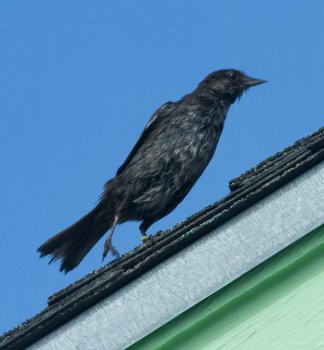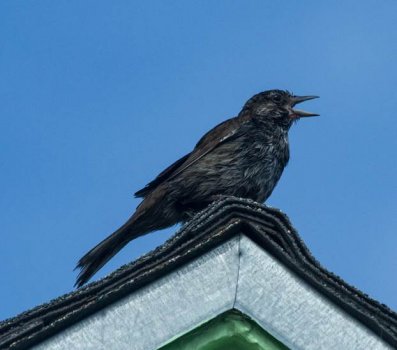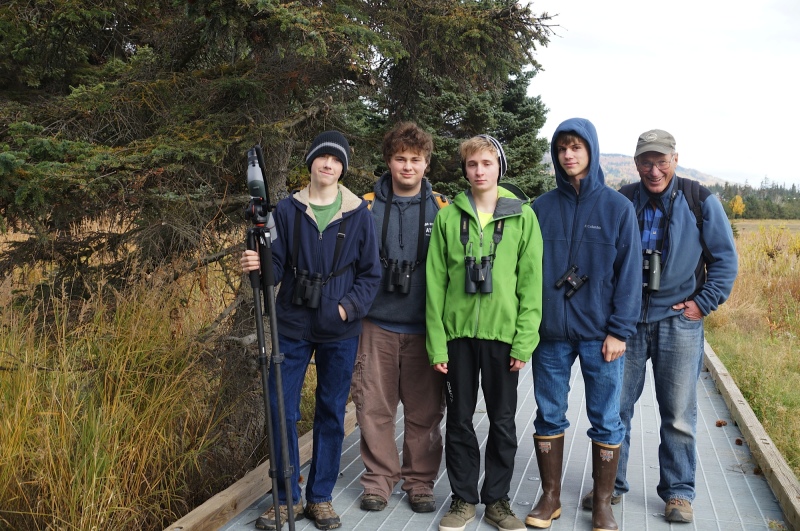In early June, David Hanson, a Texas birder, took some photos from inside Spit Sisters of an odd, black bird. He had been on trips up here before and he knew that this was not a usual sighting out on the spit. He showed the photos to several birders who were quite perplexed as to what it was and thus began our quest to discover just what in the heck this bird was?
Early on it was suggested that it was only a wet, bedraggled Song Sparrow but the bill seemed wrong and also the size. Gary Lyon measured the shingles in the photo and found that the exposed shingle was 6 inches so the bird was accurately measured at 8-9 inches long.

The bird had a yellow band on one leg which we thought meant that it had been a caged bird since wild birds are banded also with a metallic band. At one point we thought that a yellow band meant that it was from Peru but later found out that yellow bands mean Peru only if they’re shorebirds.
The other clues that it had been a caged bird were that the feathers were rumpled and unkempt and the tail was quite bedraggled. And, according to Martin Renner, that the lower mandible was shorter than the upper one.
It was singing so that meant a male no doubt. Unfortunately Dave had been inside the busy, noisy Spit Sisters restaurant when this was happening so he couldn’t hear the song at all.

We contacted Cornell and they had several folks look at the photos and decided that it was probably a Red-winged Blackbird. This based on the physiology and the fact that they are in Alaska. I wanted to say BUT, IT HAD BEEN CAGED so could have come from anywhere, couldn’t it? Could it be a Melodious Blackbird or Scrub Blackbird, however unlikely?
We tried to track down a bona fide Icterid specialist but could not find one. There must be one out there somewhere? And through this time we advertised and promised absolute “unlimited fame” to anyone who would ID this bird with certainty.
Recently we discovered an interesting website called WhatBird where you post a photo plus information and lots of folks look and hopefully respond. Our post got over 480 viewings but few useful responses. They suggested possibly Melodious Blackbird which is from Central America but gave no real evidence. What happens on this site is that your post gets buried deeper and deeper if no one responds, so I wrote some little additions to my post and so we’d get back on Page One for a while. I did my best! It was mind boggling, but maybe comforting, to see how many people had birds they couldn’t identify! (Gee, it wasn’t just us!!)
So here we are, nearly two months after the original sighting. Our conjecture is that it’s a Red-winged Blackbird. But we will always wonder why it had the yellow band, why someone would have had it in a cage, and whatever happened to it?
Maybe “When you have eliminated all which is impossible, then whatever remains, however improbable, must be the truth.” Arthur Conan Doyle, The Case-Book of Sherlock Holmes.


